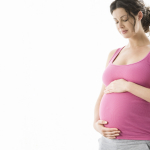Women with bipolar disorder (BD) are at extremely high risk for postpartum psychiatric illness, including postpartum psychosis. While the American College of Obstetrics and Gynecology now recommends that all women be screened for depression during pregnancy and the postpartum period, we have little information regarding the screening tools that are best suited for the identification of women with bipolar disorder. Many sites now use the Edinburgh Postnatal Depression Scale for postpartum screening. This instrument is fairly good for identifying women with depression but is not useful for distinguishing between unipolar and bipolar depression.
If there is a clear history of hypomania or mania, one would make a diagnosis of bipolar disorder in a patient who presents with depressive symptoms. But in women, who are more likely than men to present with mixed symptoms, there may be no clear history of hypomania or mania. While the DSM outlines signs and symptoms of a major depressive episode, which can be either bipolar or unipolar in nature, there do appear to be clinical features that may distinguish bipolar from unipolar depression.
WHIPLASHED is a mnemonic device developed by Dr. Ronald Pies to help distinguish bipolar from unipolar depression, focusing on these distinctive clinical features:
| W | Worse or “wired” when taking antidepressants. The patient often complains of feeling “antsy,” unable to sleep, or more agitated on conventional antidepressants. Numerous failed antidepressant trials; apparent “tolerance” to antidepressants not overcome with increased dosage (pseudotolerance); and antidepressant-induced “switching” into mania or cycle acceleration may be reported. |
| H | Hypomania, hyperthymic temperament, or mood swings by history. Persons with hyperthymic personality exhibit intense optimism, increased energy, reduced need for sleep, extroversion, and overconfidence. Periods of elevated mood or energy often do not fit formal DSM criteria for hypomania; some may last only a day or two. |
| I | Irritable, hostile, or showing mixed features during the presenting episode of depression. Some patients may show one or more hypomanic features (eg, racing thoughts) even while depressed. |
| P | Psychomotor retardation appears to be more common in bipolar I depression than in unipolar major depression; however, several studies note that psychomotor agitation is more common in bipolar II than in unipolar major depression. |
| L | Loaded family history, either for mood swings, bipolar disorder, or affective illness in general. A family history of comorbid mood disorder and alcoholism may also point toward bipolarity. |
| A | Abrupt onset and/or termination of depressive bouts, or relatively brief depressive episodes (less than 2 to 3 months). Some patients will also report a brief burst of increased energy or subthreshold hypomanic symptoms immediately before the onset of depression. |
| S | Seasonal or postpartum pattern of depression. “Winter-type” seasonal affective disorder (depressed in fall/winter, hypomanic in spring) and postpartum psychosis both have clinical and epidemiological links with bipolar disorder. |
| H | Hyperphagia and hypersomnia, what are sometimes termed atypical features, appear to be more common in bipolar than in unipolar depression. Paradoxically, hypersomnia may coexist with psychomotor agitation in bipolar II patients (“sleepy speeders”). |
| E | Early age at depression onset (younger than 25 years). Major depression first appearing during adolescence, especially with psychotic features, may herald subsequent bipolarity. |
| D | Delusions, hallucinations, or other psychotic features appear to be more common in bipolar than in unipolar depression. |
WHIPLASHED, although first developed in 2007, has not been widely used or validated. A recent study looked at the ability of the WHIPLASHED questionnaire to distinguish between unipolar and bipolar depression in a group of women.
Female patients with depression (n=82) were recruited from an outpatient women’s mental health clinic. Data were collected using a self-report questionnaire designed to parallel the WHIPLASHED interview questions. A positive screen was defined as a score of 5 or greater on the WHIPLASHED questionnaire. Diagnostic assessments were made using the Mini International Neuropsychiatric Interview.
Based on the MINI, 54 of the women were diagnosed with unipolar depression and 28 with bipolar depression. The majority of subjects were white (67%), employed (68%) and married (57%) with a mean age of 36.8 years.
A cutoff score of 5 generated 96% sensitivity and 52% specificity, while raising the threshold to 6 generated 89% sensitivity and 76% specificity for a bipolar disorder diagnosis. Translation: If we administer the WHIPLASHED questionnaire to women with depression using a cutoff score of 5, we would miss or misclassify only 4% of women with bipolar depression (high sensitivity), although half of those women identified would actually have unipolar depression (low specificity). If we up the cutoff to 6, we would miss 11% of women with bipolar depression, but the test would be more specific.
Even for skilled psychiatrists with years of clinical experience, it can be extremely difficult to distinguish unipolar from bipolar depression, and this becomes even more difficult during the postpartum period. Hypomania and mania are uncommon during the postpartum period; most commonly we see women with depressive or mixed symptoms. In this setting, women often present with profound sleep disruption; this could be a symptom of bipolar depression, but sleep problems could also be attributed to severe anxiety or the demands of caring for a newborn who is waking every two hours.
In addition, postpartum women often present with anxiety symptoms and sometimes irritability. How does one distinguish when these symptoms are a normal response to the demands of caring for a newborn or symptoms of a psychiatric episode, such as unipolar or bipolar depression, or even the earliest stages of postpartum psychosis.
As far as I know, WHIPLASHED has not yet been tested in pregnant and postpartum populations, so we would not recommend this questionnaire as a standalone instrument for making clinical decisions. Nonetheless, there is a clear need for tools that can help clinicians make well-informed decisions regarding the referral and care of pregnant and postpartum women with psychiatric illness. We are now asking OB-GYNs, who typically do not have extensive psychiatric training, to make very difficult clinical assessments and decisions. If we want this approach to be successful, we have to provide them with the appropriate tools.
Ruta Nonacs, MD PhD
Mahmoud DR, Yang A, Ciolino JD, Fisher SD, Sit D, Pinheiro E, Pendergrast T, O’Shea K, Wisner KL, Clark CT. Validity of the WHIPLASHED as a tool to identify bipolar disorder in women. J Affect Disord. 2018 Dec 17;246:69-73.
WHIPLASHED: A Mnemonic for Recognizing Bipolar Depression (Ronald Pies, Psychiatric Times)










Leave A Comment